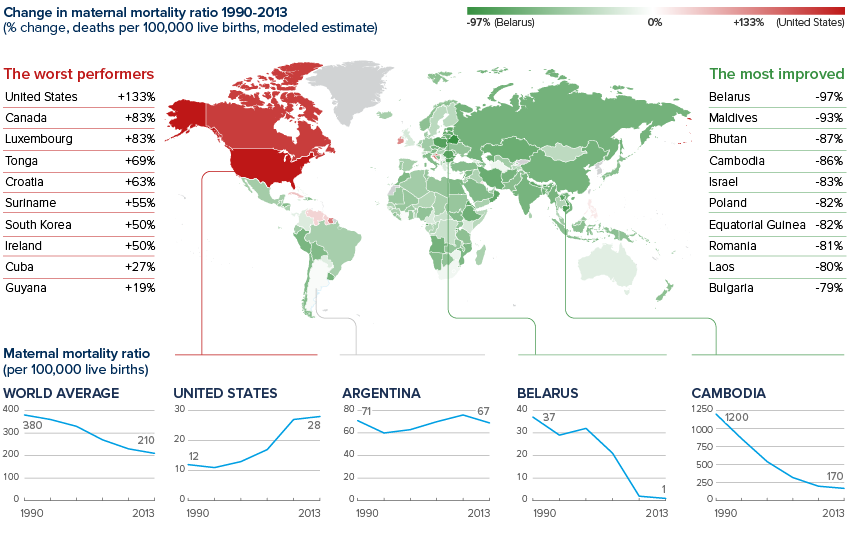Global social shifts threaten maternal mortality gains
Maternal mortality has decreased significantly since 1990, but in some countries the trend is reversing

Source: World Bank, WHO
Outlook
The global maternal mortality ratio (MMR) fell by 45% between 1990 and 2013. Although Bangladesh does not feature in the top ten performers, it is often cited as a strong example of MMR reduction: despite its deep economic and infrastructure problems, the country has reduced MMR by nearly 60% in less than ten years, largely due to an effective family planning programme.
Beyond the immense challenges associated with the developing world -- such as providing direct medical care -- developed countries are encountering problems associated with social shifts. Obesity and chronic conditions such as diabetes and cardiovascular disease, the rising age of mothers giving birth and growing number of multiple-birth pregnancies from fertility treatments are reversing trends of decreasing MMR in some of the most developed countries in the world.
Impacts
- The loss of productive women in childbirth stunts economic growth and perpetuates cycles of poverty.
- Strict abortion rules, which tend to be accompanied by unsafe practices, contribute to maternal mortality.
- Strong government action has a clear and significant impact on MMR reduction, especially in developing countries.
- Efforts to reduce MMR strengthen national public health infrastructures and improve general wellbeing.
See also
- Stagnating US women’s rights may set global pace - Mar 8, 2017
- US anti-abortion rule risks women’s health globally - Feb 2, 2017
- Chronic diseases raise global risks to maternal health - Jul 1, 2015
- More graphic analysis